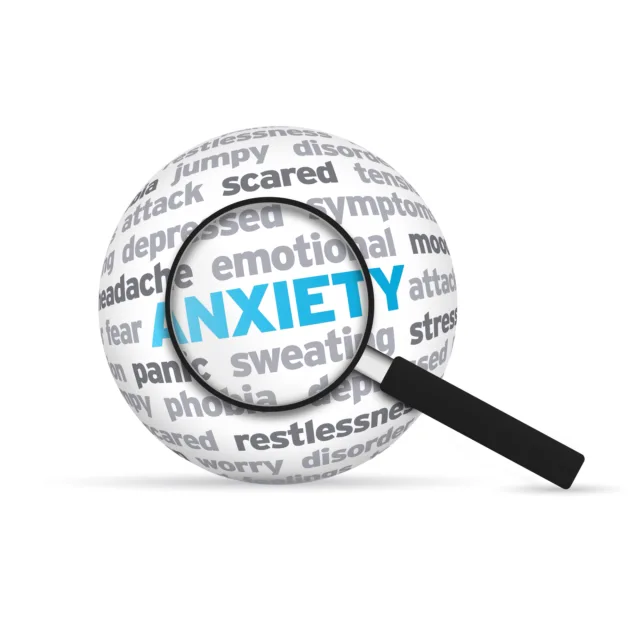Understanding Anxiety Disorder: The Symptoms, Types, and How to Seek Help
Introduction:
This article aims to demystify anxiety disorders, from panic attacks to symptoms and causes. This comprehensive guide is essential reading for anyone who is impacted by anxiety and panic or who knows someone who is. By understanding anxiety disorders better, we can help to reduce the stigma surrounding them and provide the tools needed to seek help and manage these conditions effectively.
Understanding Anxiety Disorder
Anxiety disorder is a common mental health condition that affects many people across the world. It’s more than just feeling anxious; it’s a constant, overwhelming worry and fear that can interfere with daily activities. Anxiety disorders can cause significant distress and can affect both mental and physical health.
Anxiety disorder is not a single condition but includes several types such as panic disorder, social anxiety disorder, generalized anxiety disorder, agoraphobia, and others. Dealing with anxiety can be challenging, but understanding the disorder may be the first step toward managing it effectively.
What Having Anxiety Feels Like YouTube
Decoding the Symptoms of Anxiety
Symptoms of anxiety can manifest in various ways and may include both emotional and physical symptoms. Emotional symptoms can include feelings of unease, such as worry or fear, while physical symptoms may involve a rapid heartbeat or dizziness.
It’s crucial to understand that everyone experiences anxiety differently. Some people may feel anxious in social situations, while others may have physical symptoms of anxiety without any apparent reason. Recognizing your own signs of anxiety can be a crucial step in seeking help.
Exploring the Types of Anxiety
There are different types of anxiety that people may experience, each with its own set of symptoms and triggers. Some common anxiety disorders include:
- Generalized Anxiety Disorder: Characterised by chronic anxiety, exaggerated worry, and tension.
- Panic Disorder: Involves recurring panic attacks at unexpected times.
- Social Anxiety Disorder (Social Phobia): Fear of being in social situations that could lead to embarrassment or judgment.
- Post-Traumatic Stress Disorder (PTSD): Can occur after a traumatic event.
- Obsessive-Compulsive Disorder (OCD): Characterised by unreasonable thoughts and fears (obsessions) leading to compulsive behaviors.
Identifying the Type of Anxiety Disorder
Identifying the specific type of anxiety disorder can be challenging but is critical for developing an effective treatment plan. It often involves a thorough mental health assessment by a mental health professional, which may include discussions about symptoms, life events, and mental health history.
It’s important to remember that it’s possible to have more than one type of anxiety disorder at once – for example, someone could have both social anxiety disorder and panic disorder. Understanding the specific type of anxiety disorder can help to tailor treatment and coping strategies.
Recognizing the Signs of Anxiety
Being able to recognize the signs of anxiety can be a crucial step in seeking help. These may include:
- Constant, uncontrollable worry
- Feeling restless or on edge
- Difficulty concentrating
- Irritability
- Sleep disturbances
It’s important to note that these signs can also be symptoms of other health conditions. If you’re experiencing any of these symptoms and they’re causing distress or interfering with your daily life, it’s important to seek help from a health professional.
Delving into Generalised Anxiety Disorder
Generalized anxiety disorder (GAD) is one of the most common types of anxiety disorder. It’s characterized by persistent and excessive worry about various things, such as health, work, or social interactions. People with GAD often expect the worst, even when there is no apparent reason for concern.
While it’s normal to worry about life’s challenges, people with GAD find it hard to control their worry and may feel anxious most days, making daily life feel daunting and overwhelming.
Psych2Go: 7 Signs It Might Be Anxiety
Unveiling the Signs and Symptoms
The signs and symptoms of anxiety can vary significantly from person to person. However, there are some common symptoms that many people with anxiety disorders experience:
- Feeling nervous, restless, or tense
- Having a sense of impending danger, panic, or doom
- Increased heart rate
- Breathing rapidly (hyperventilation)
- Sweating
- Trembling
- Feeling weak or tired
These symptoms can also cause significant distress and interfere with daily activities, making it critical to seek help if you’re experiencing them.
Risk Factors for Anxiety: What You Should Know
While anyone can develop an anxiety disorder, certain factors may increase your risk:
- Temperament: People with certain temperaments may be more prone to anxiety disorders.
- Genetics: Anxiety disorders can run in families.
- Life experiences: Traumatic life events or experiences can trigger anxiety disorders.
- Other mental health disorders: People with other mental health disorders, such as depression, often also have an anxiety disorder.
Symptoms and Causes: The Connection
The causes of anxiety disorders are not entirely clear, but they are likely to be a combination of genetic, environmental, psychological, and developmental factors. Understanding the connection between symptoms and causes can be a critical part of managing anxiety disorders.
How and When to Seek Help
If you’re experiencing symptoms of an anxiety disorder that are causing distress or interfering with your daily life, it’s important to seek help. This could involve speaking to a health professional such as a GP, psychologist, or psychiatrist who can conduct a thorough evaluation and provide guidance on treatment options.
Treatments for anxiety disorders often involve a combination of medication and psychotherapy. Cognitive behavioral therapy (CBT) is one of the most effective forms of therapy for anxiety disorders.
Here are a few key points to remember:
- Anxiety is more than just feeling stressed or worried.
- Symptoms can include both emotional and physical signs.
- There are different types of anxiety disorders.
- Recognizing the signs of anxiety is the first step toward seeking help.
- Treatments are available, and they can help manage symptoms effectively.

